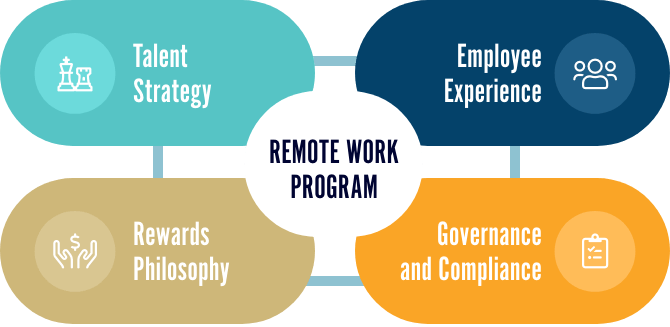Even before companies have been hit hard with the pandemic, more employers have already decided to switch to remote work. Several reasons play a factor in this decision.
For most, it is the convenience that their employees can take delight in. Skipping the daily hassle of transportation and the 8-5 clock means a balanced work and life. For others, it is the “fewer expenses and more savings” argument. And since COVID-19 happened, the work from home option also means considering the safety of the workers.
But not everyone can easily adapt to change. Now, employers are crafting another set of guidelines and support system that fits this kind of work setup. The sudden call for flexibility in time, location, and communication aspects can be overwhelming. Having said this, companies should make the transition from office to remote work as seamless as possible.
To guide you through the process, we listed some helpful tips you can use along the way.
Build A Remote Work Policy
 Image from airshare.air-inc.com
Image from airshare.air-inc.com
Every adjustment starts with a manual wherein rules (e.g. dos and don’ts) are written. A remote work policy should be as simple and clear as possible. Since this will be their go-to instruction guide, including complex jargon and legal terms might just confuse them.
Technically, a comprehensive remote work policy should include every aspect employees should know about. From working hours, dress code, leaves, absences, software tools, among others.
To make sure that every information printed on the manual is legal and employee-friendly, companies should consult with its lawyer, HR personnel, and team managers. Ideas coming from employees should also be considered when crafting policies. Since there is a fine line that separates work from home in a remote setup, they should be consulted if certain rules will not be doable in their present workplace.
According to Forbes, here are some basic topics to include in your remote work policy:
- Who is eligible for remote work?
- Make it clear if the remote work is temporary or permanent
- Does the arrangement call for 100% remote work? Or is it partial office based?
- Safety, security, and privacy in the work setup
- Schedules (working hours and working days)
- Are there any expectations? (e.g. work for 5 hours every day, finish 5 articles in a day)
- Revised job duties under the remote work shift
- How much is the pay? Is it on a per hour basis?
- Integration with the existing company policies
Equip Workers With The Right Tools
 Image from softactivity.com
Image from softactivity.com
If you want to have an efficient and productive workforce in a remote setup, giving your employees the right tools is very vital. Most of the time, the lack of proper equipment such as software, devices, and internet connectivity, can affect the quality of work.
So, if you are still in the process of transitioning from office to remote work, now is the best time to have your employees try out the tools they will be using once the shift has begun. This way, they won’t have a hard time learning new applications on their own.
Here are some essential tools that you can equip your remoter workers with:
- Messaging tool for a faster and organized way of communicating with the team.
- Attendance tool for monitoring the time in and time out, leaves, and absences of the employees.
- Video conferencing application to maintain regular meetings and contact
- Security tool to ensure that data (e.g. files, passwords) are secure
Establish Trust
 Image from employementhero.com
Image from employementhero.com
This may sound cliche but without trust, remote work will not last long. Bosses do not see their employees work physically. They do not have an eye on whether they are really doing their task or just lying down on the bed. If employers have this kind of mindset, arguments and judgments will never end.
That is why shifting to this kind of setup means that you trust your people to finish work with quality and on time. But trust is also a two-way street. This means that employees should believe that the company can take care of them moving forward.
“Leading people is much less about checking their work or presence management than it is developing an environment in which teams want to do — and are rewarded both directly and intrinsically for — the very best work they’re capable of,” said author and social business strategist, Amber Naslund.
Keep Communication Lines Open
Image from eztalks.com
Communication is definitely the key to a seamless transition from office to remote work. One best way to make sure that everyone in the company is in sync, meetings should be done regularly.
Meetings can be a little awkward and boring for some. So, one must be able to clear up the air first thing before starting with the agenda of the meeting. You can include ice breakers in a form of games or quick chats. Anything is okay as long as you establish a friendly and approachable tone.
Companies should also come up with at least two group messaging or chats. One is for work-related matters where everyone can ask for updates on a certain project or deadline, While the other one is more on the casual side of things. The latter can be the employees’ day to day chit chat platform. Just imagine hanging out with your co-workers during or after lunch. However, this time, it is just via chat.
The management can also hold a face to face gathering every once in a while. Examples are during holiday parties or team-buildings.
Whether you are still considering transferring from office to remote work. Or you are already thinking about going full time in this kind of setup. Everything will work out well as long you plan ahead of time and consider the following mentioned tips.